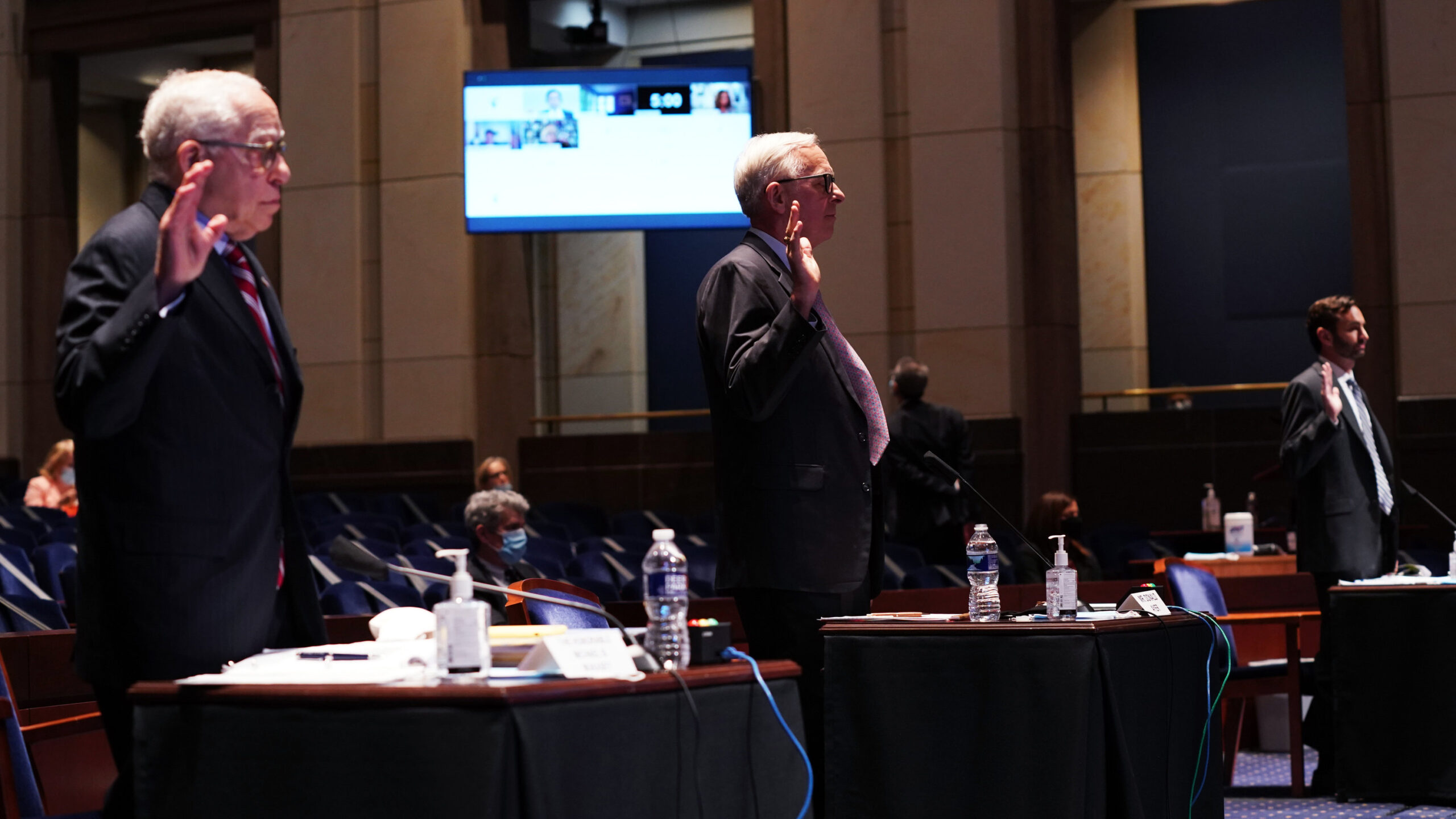Advertisement
Minority-serving colleges and universities are looking on helplessly as vital funding for their science, engineering and math programs are bogged down in the Senate morass.

WASHINGTON — A federal program to bolster science, mathematics and engineering at minority-serving colleges has been caught in a partisan tug of war in the Senate, where inaction and gridlock are starting to have real-world consequences.
Stuck in the Senate’s morass is $255 million a year that both parties want to give historically black colleges, tribal colleges and higher education institutions that serve Hispanic students to help bolster science, technology, engineering and math — or STEM — over the next two years.
Senate Democrats tried to advance that funding in a stand-alone bill this week, but Republicans objected. They want the program as a sweetener for a broader overhaul of federal higher education law.
The stalemate has left minority-serving institutions and their six million students preparing for the worst. Funding officially ran out Sept. 30 with the end of the last fiscal year, and while the Education Department has assured them that money will continue to flow through this school year, education leaders are already looking for cuts. Planning for the next school year has all but stopped.
Presidents of the colleges “are having serious conversations right now, telling people they’re going to be laid off,” Harry L. Williams, the president of the Thurgood Marshall College Fund, which represents public black colleges, said at a news conference on Wednesday. “We have faculty, we have students right now attending our campuses, and they are making plans to try to find something else — to pack up their families to move somewhere else.”
For more than a decade, chronically underfunded minority colleges have relied on federal STEM funding, allocated under the Higher Education Act, to pay for research laboratories, faculty salaries and other central aspects of their science programs. College presidents say the funding is vital to fill the pipeline of minority graduates flowing into STEM professions. Historically black colleges and universities, known as H.B.C.U.s, enroll 10 percent of all black college students, but produce 21 percent of all black STEM graduates.
“We talk a lot about diversity in the workplace, and H.B.C.U.s are the answer,” said Lily D. McNair, the president of Tuskegee University. More than a third of the students at Tuskegee major in science, technology, engineering or math, Ms. McNair said, making the $840,000 in federal STEM funding that it receives “critical.”
Black colleges and universities have long enjoyed bipartisan support, and under a House-passed bill called the Future Act, each year they would receive $85 million of the annual $255 million in STEM funding. But just days before the funding expired, Senator Lamar Alexander of Tennessee, the chairman of the Senate Education Committee, blocked its passage in the Senate. A former college president and longtime supporter of black colleges, Mr. Alexander demanded progress on rewriting parts of the Higher Education Act instead.
“Black and brown students becoming STEM graduates should not be a partisan issue,” said Lodriguez Murray, the senior vice president for public policy and government affairs at the United Negro College Fund, which represents private black colleges, and has led the campaign to support the Future Act.
Democrats accused Mr. Alexander of using black colleges as bargaining chips. Their version of a comprehensive revision of higher education law would address thorny issues like campus sexual assault, accountability for for-profit colleges and exploding student loan debt — which are not addressed in Mr. Alexander’s legislation.
But Mr. Alexander appears undeterred by the gridlock that has ground the Senate to a halt beyond the conveyor belt of judicial and executive branch confirmations that take up almost all the chamber’s time.
Unlike the Future Act, he said, his package of bills would achieve bipartisan objectives such as simplifying the federal financial-aid application and restoring Pell grants for some prisoners. It would also make permanent the STEM funding stream for minority colleges.
“We’re not on vacation,” Mr. Alexander said Tuesday, after his bills were blocked. “I know everybody’s talking about impeachment, but we have lots of students around this country who would like to have a simpler way to go to college. We have lots of historically black colleges and universities and other minority-serving institutions that would like to have permanent funding.”
On Wednesday, Senate Democrats held a news conference to denounce the stalemate, and call for the chamber to pass the Future Act.
“Everyone in the Senate wants a permanent fix, but sometimes you have to go a step at a time,” said Senator Doug Jones, Democrat of Alabama, who sponsored the Future Act in the Senate.
Senator Chuck Schumer of New York, the Democratic leader, said, “These institutions are ladders up.”
“So many people living in poorer areas, in rural areas, don’t have many ladders,” Mr. Schumer added.
In Mr. Alexander’s home state, the president of Lane College, Logan Hampton, is hoping for a quick resolution. Mr. Hampton said that the federal science funding, which accounts for 3 percent to 5 percent of the small private liberal-arts college’s budget, has incited a STEM revitalization in recent years. STEM majors are increasing, and the college has been able to attract high-quality faculty, most recently a new computer science professor. The funding pays the salaries of about half of the school’s STEM faculty, who are the hardest to recruit and retain.
“I don’t want them thinking about their jobs,” he said. “I want them to be thinking about how to be creative, about how to get our students to graduate schools.”
Like many black college leaders, Mr. Hampton supports many of the legislative proposals that Mr. Alexander is pushing, but he fears what will happen if the Future Act funding is not secured.
“As an outsider looking into Washington, D.C.,” he said, “I think if you have a bird in the hand, you’ve got to hold on to it.”


